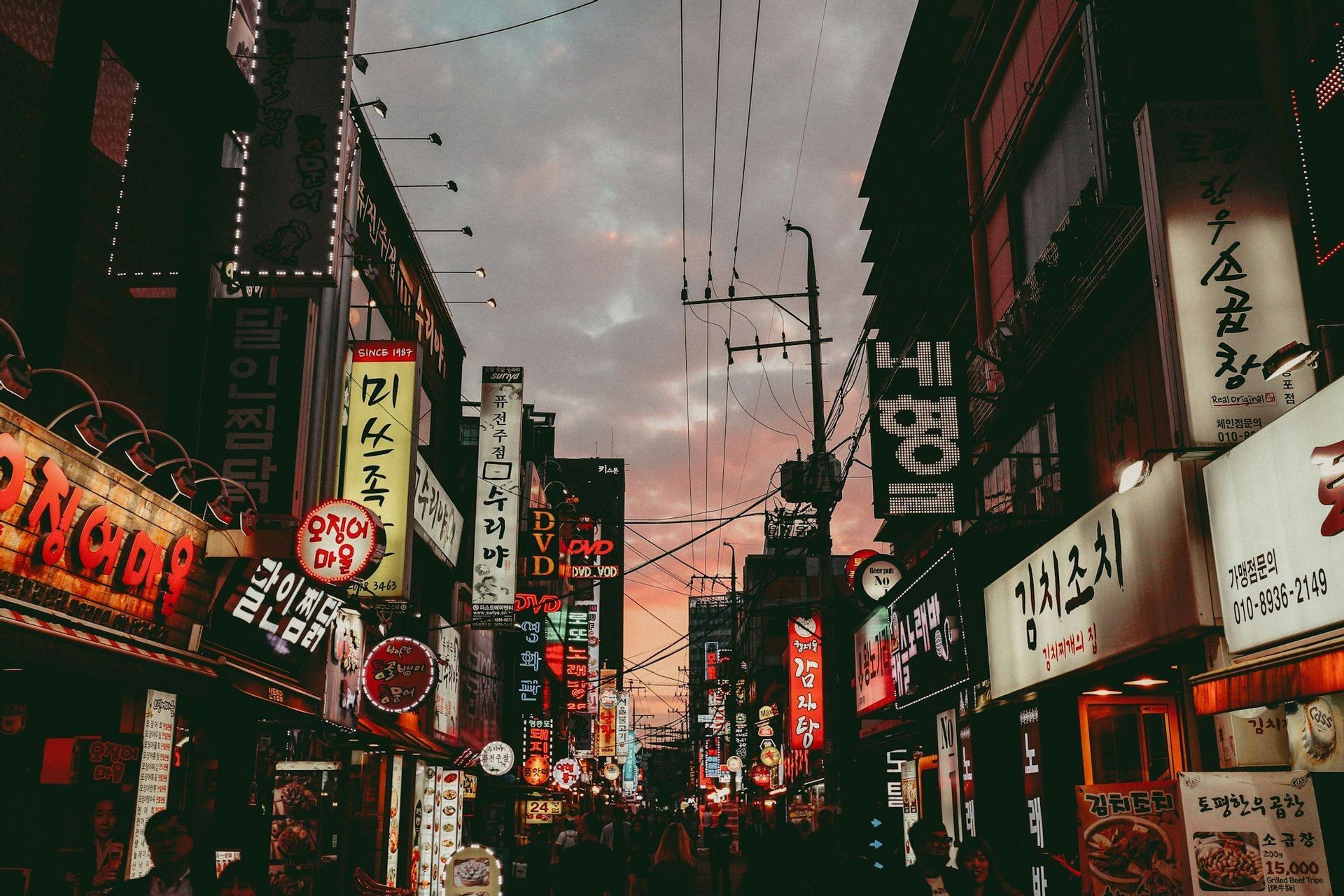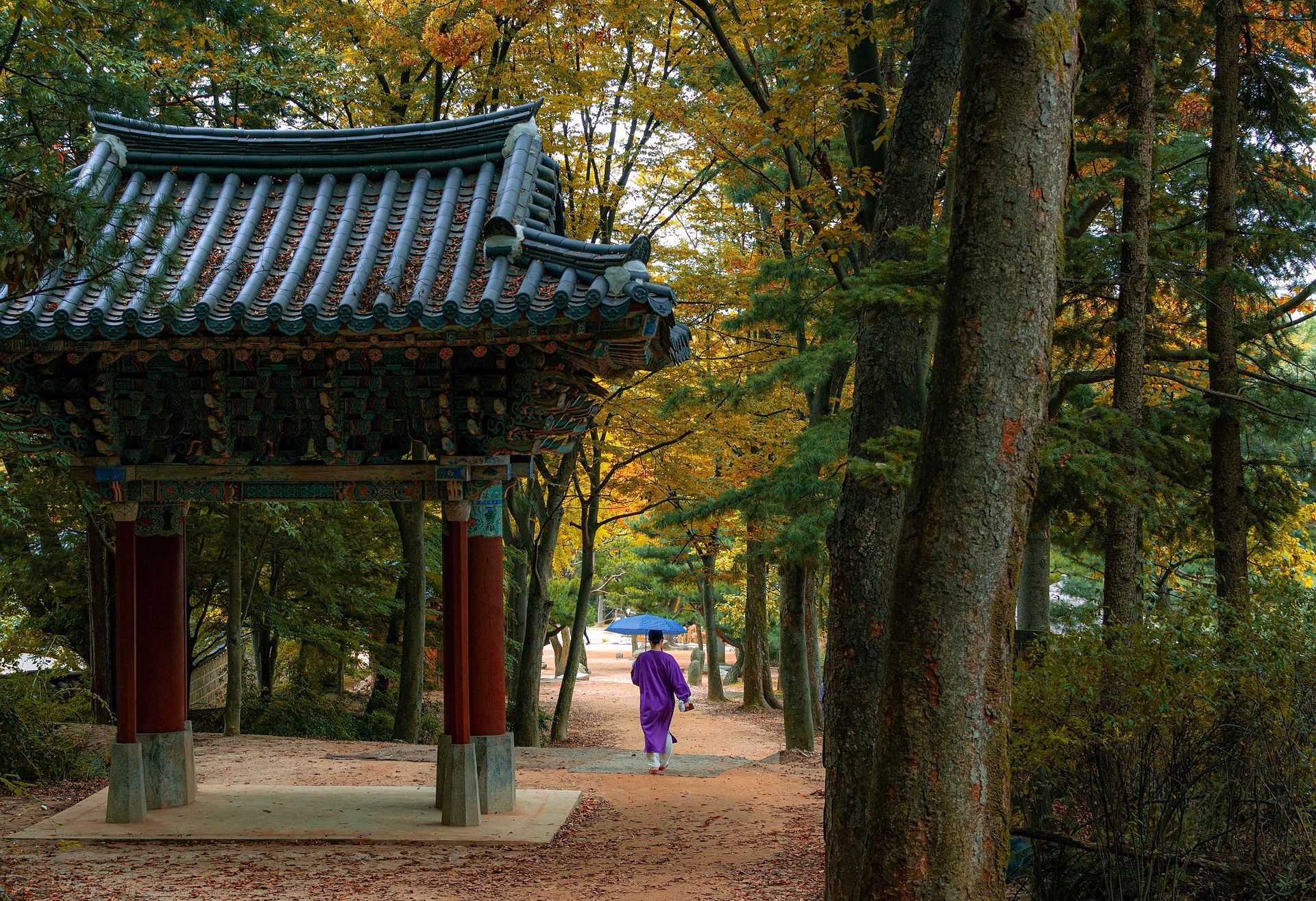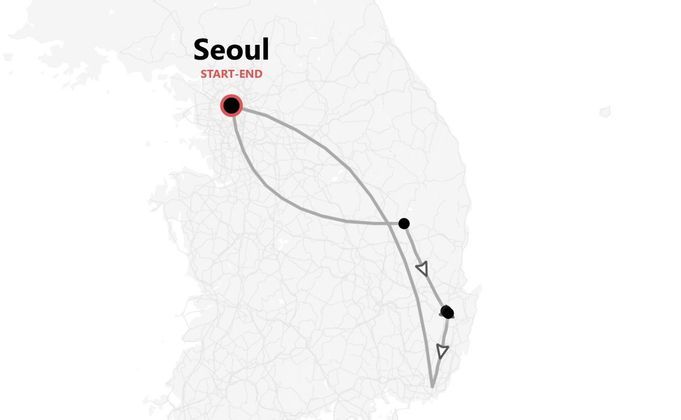
Group trips to Korea
Our organized trips to Korea
Unveil Korea, where the whispers of ancient dynasties harmonise with the pulse of tomorrow, offering a tapestry of experiences as rich as its history. From the captivating energy of Seoul's ultra-modern skyline and its vibrant pop culture, to the serene elegance of Gyeongbokgung Palace, a majestic testament to imperial grandeur, and the breathtaking natural wonders of Jeju Island, a UNESCO-listed paradise of volcanic landscapes and pristine beaches, Korea beckons the curious explorer. This dynamic land promises a journey of discovery for those who crave a seamless blend of profound heritage, exhilarating innovation, and unparalleled culinary delights.
FAQs about Korea
If you are a UK citizen, to find out the entry requirements for Korea, you can check this informational page from our partner Sherpa. If you need a visa, you can apply for it through Sherpa. If you are not a UK citizen, you can still use Sherpa by changing the nationality in the 'Passport' section.
Before traveling, always remember to check the government website of your country of origin for updates on the entry requirements for Korea – you wouldn’t want to stay home due to a bureaucratic detail!
- UK residents: review the FCDO Travel Advice.
- US residents: consult the US Department of State Travel Advice.
- Other residents: refer to your government or local consulate's travel advice.
South Korea is in the Korean Standard Time (KST) zone, which is 9 hours ahead of Greenwich Mean Time (GMT+9). South Korea does not observe daylight saving time.
- If it is 12pm in the UK, it will be 9pm in South Korea.
- If it is 12pm on the East Coast of the USA, it will be 1am the next day in South Korea.
- On the West Coast, if it's 12pm, it will be 5am the next day there.
The currency used in Korea is the South Korean Won (KRW). As of the latest rates:
- 1 GBP is approximately 1,500 KRW
- 1 USD is about 1,200 KRW
- 1 EUR is around 1,300 KRW
You can exchange currency at banks, exchange kiosks at airports, and major hotels. Make sure to check the current rates as they can fluctuate.
In Korea, you can pay using a variety of methods. Credit and debit cards are widely accepted, especially Visa and MasterCard, in most stores, restaurants, and hotels. However, it's always a good idea to carry some cash for smaller establishments or markets that might not take cards. Mobile payment apps like KakaoPay are also popular. It's advisable to inform your bank about your travel plans to avoid any issues with card transactions abroad.
Tipping in Korea is not a common practice, and it's generally not expected. Most restaurants, cafes, and services include the service charge in the bill. If you really want to show appreciation for exceptional service, you can round up the bill or leave some small change, but it's entirely optional. In high-end hotels or touristy areas, tipping might be appreciated but still not expected. Remember that the culture in Korea is different, so a genuine thank you is often enough.
Korea has excellent internet coverage, and you'll find Wi-Fi widely available in most urban areas, including cafes, restaurants, and public spaces. If you're planning to travel outside the cities or need constant internet access, buying a local SIM card or an e-SIM data plan is a good idea. Major providers include SK Telecom, KT, and LG U+. You can purchase these at the airport or convenience stores. While Wi-Fi is plentiful, having a SIM card ensures you stay connected wherever you go.
In Korea, the official language is Korean. It's a unique language with its own alphabet called Hangul. Here are some useful expressions you might hear or use:
- Hello: Annyeong (안녕)
- Thank you: Kamsahamnida (감사합니다)
- Yes: Ne (네)
- No: Aniyo (아니요)
- Excuse me: Sillyehamnida (실례합니다)
Having these phrases handy can help you communicate a bit easier during your travels.
In Korea, you'll find Type C and Type F plugs. They operate on a 220V supply voltage and 60Hz frequency. If your devices use a different plug type, we recommend you bring a universal adapter to ensure your gadgets stay charged.
In Korea, the main religions include Buddhism and Christianity, but a significant portion of the population identifies as non-religious. When visiting, it's important to be aware of some key religious holidays, such as Seollal (Lunar New Year) and Chuseok (Korean Thanksgiving), which are widely celebrated. These holidays might affect travel plans due to business closures and increased travel among locals. Always check local calendars for specific dates as they vary each year.
Packing for Korea can be exciting as the country offers diverse experiences. Here's a breakdown of what to put in your backpack:
-
Clothing:
- Lightweight layers for summer
- Warm sweaters and a coat for winter
- Comfortable jeans or pants
- A rain jacket, especially for monsoon season
-
Shoes:
- Comfortable walking shoes
- Sandals for warm weather
- Waterproof boots for rainy or snowy days
-
Accessories and Technology:
- Sunglasses and a hat for sunny days
- Universal power adapter (Korea uses Type C and F plugs at 220V)
- Portable charger
- Camera or smartphone for photos
-
Toiletries and Medication:
- Travel-sized toiletries
- Sunscreen
- Basic first aid kit
- Common travel medication like pain relievers, antihistamines, and motion sickness tablets
Make sure you have everything you need for a comfortable and enjoyable trip!
The weather in Korea varies by season and region. Here's a quick rundown:
- Seoul and Northern Korea: Winters (December to February) are cold and dry, with temperatures often below freezing. Summers (June to August) are hot and humid, with temperatures around 25-30°C. Spring (March to May) and autumn (September to November) are mild and pleasant.
- Southern Korea, including Busan and Jeju Island: Winters are milder compared to the north. Summers are similarly hot and humid, with a chance of typhoons. Spring and autumn are comfortable and ideal for visiting.
The best time to visit Korea is during spring or autumn when the temperatures are moderate and the scenery is beautiful with cherry blossoms or colorful autumn leaves.

